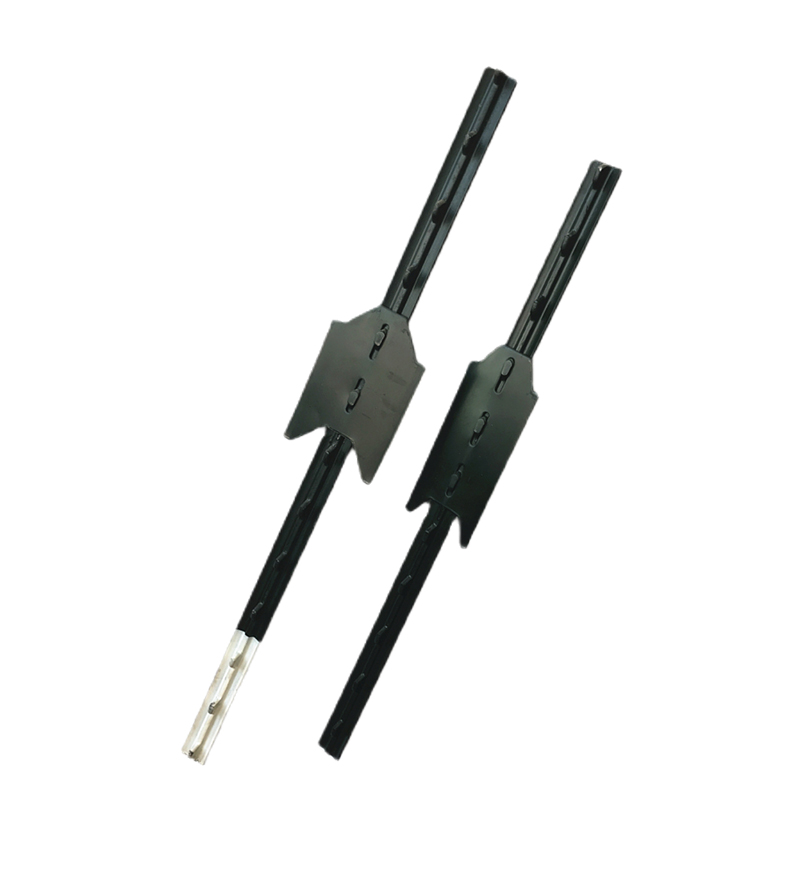How to choose the right fence post?
Choosing the Right Fence Post
The first step in installing a fence is selecting the right type of fence post. Various materials are available, each with its own advantages and considerations.

Wood Fence Posts
Wooden fence posts are a popular choice due to their natural appearance and affordability. They offer a classic and rustic charm to any property. However, wood requires regular maintenance to protect against rot, insects, and weathering.
Metal Fence Posts
Metal fence posts, such as steel or aluminum, provide exceptional strength and durability. They are resistant to rot, insect damage, and adverse weather conditions. Metal posts are a great option for high-security fences or areas prone to strong winds.
Vinyl Fence Posts
Vinyl fence posts are low-maintenance and offer excellent longevity. They are resistant to rot, insects, and harsh weather conditions. Vinyl posts are available in various styles and colors, providing versatility and aesthetics.
Composite Fence Posts
Composite fence posts are made from a blend of wood fibers and recycled plastic. They offer the natural beauty of wood with the durability and low maintenance of plastic. Composite posts are resistant to rot, insects, and warping, making them an environmentally friendly choice.
Factors to Consider
Before selecting a fence post, several factors should be taken into account.
Climate and Weather Conditions
Consider the climate and weather conditions in your area. If you experience extreme temperature variations, high winds, or heavy rainfall, you need a post material that can withstand these conditions.
Purpose of the Fence
Determine the primary purpose of your fence. Are you installing it for privacy, security, or decorative purposes? Different fence post materials offer varying levels of strength and security, so choose accordingly.
Budget and Maintenance
Evaluate your budget and long-term maintenance requirements. Some materials may have a higher upfront cost but require minimal maintenance, while others may be more affordable but demand regular upkeep.
Installing Fence Posts
Proper installation of fence posts is essential to ensure a sturdy and reliable fence.
Preparing the Ground
Clear the area where the fence will be installed. Remove any debris, rocks, or vegetation that may interfere with the post placement.
Determining Post Spacing
Measure and mark the desired spacing between each fence post. This will depend on the type of fence and your specific requirements. As a general rule, posts should be spaced evenly to maintain consistency and stability.
Digging Holes
Use a post hole digger or an auger to dig holes for the fence posts. The depth and diameter of the holes will depend on the height and type of fence. Follow local building codes and guidelines for accurate measurements.
Setting the Posts
Place the fence posts into the holes, ensuring they are level and plumb. Add gravel or concrete at the bottom of each hole for stability and drainage. Backfill the hole with soil or concrete, firmly packing it around the post.
Securing the Posts
Once the posts are set, secure them with braces or stakes to keep them in place while the concrete or soil settles. This will prevent any shifting or misalignment during the curing process.
Leveling and Aligning the Posts
Using a level and string line, check that the posts are aligned and level. Make any necessary adjustments before the concrete or soil sets completely.
Fence Post Maintenance
To ensure the longevity and functionality of your fence, regular maintenance is required.
Regular Inspections
Inspect your fence posts at least once a year for signs of damage, rot, or instability. Address any issues promptly to prevent further damage to the fence.
Repairing or Replacing Posts
If a post becomes damaged or unstable, repair or replace it immediately. This may involve removing the damaged post, installing a new one, and securing it properly.
Painting or Staining
Wooden fence posts may require periodic painting or staining to protect against weathering and extend their lifespan. Follow the manufacturer's recommendations for the appropriate products and application techniques.
Protecting Against Rot and Decay
Apply a wood preservative or sealant to wooden fence posts to protect them against rot, insects, and decay. This will help prolong their lifespan and maintain their structural integrity.
Conclusion
Choosing and installing the right fence post is vital for a durable and aesthetically pleasing fence. Consider your specific needs, budget, and maintenance requirements when selecting a material. Proper installation techniques and regular maintenance will ensure your fence remains sturdy and functional for years to come.
289
0
0

Comments
All Comments (0)